On March 23, 1924, John Hardcastle Dalton Madin was born in the city of Birmingham, England. Madin was to become one of England’s most celebrated architects, embellishing the world with his designs.
Madin passed away on January 8, 2012 and left behind him a legacy that includes the BBC’s Pebble Mill Studios, St James’s House, The Royal Birmingham Conservatoire and a number of other magnificent structures. But his most notable work, according to critics, was Birmingham Central Library: a building that is sadly no longer standing.
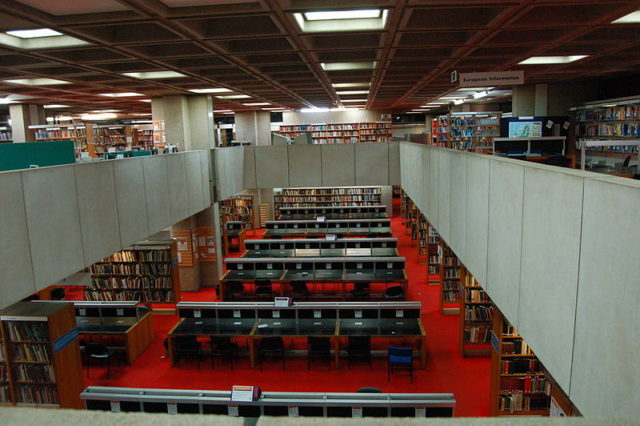
This library wasn’t the first Central Library in Birmingham. Before it, there was another that stood to the south of Edmund Street and west of the Town Hall.
Madin’s Birmingham Central Library was opened on January 12, 1974. The building resembled an upended ziggurat resting on top of twelve concrete columns and was characteristic of Brutalist architecture, an architectural movement originating at the start of the 20th century.
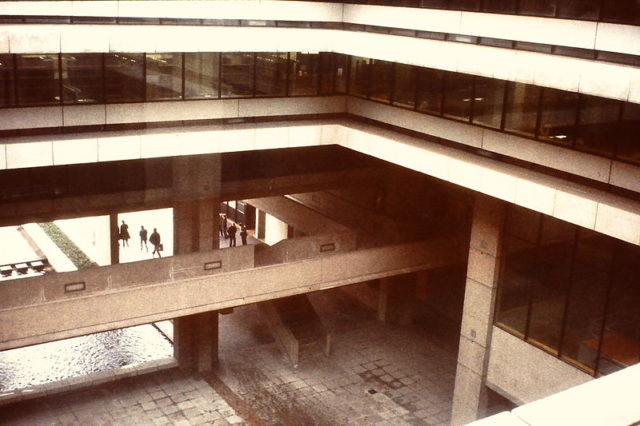
This library became one of Birmingham’s most important examples of modernist architecture, alongside the cylindrical Rotunda building and the skyscraper Alpha Tower, which is Grade II listed.
Madin’s library was part of the Paradise Circus development: 17 acres of land at the heart of the city’s civic center. The original plan of this site included the library, a school of music, a public house and shops, alongside an athletic institute and drama center.
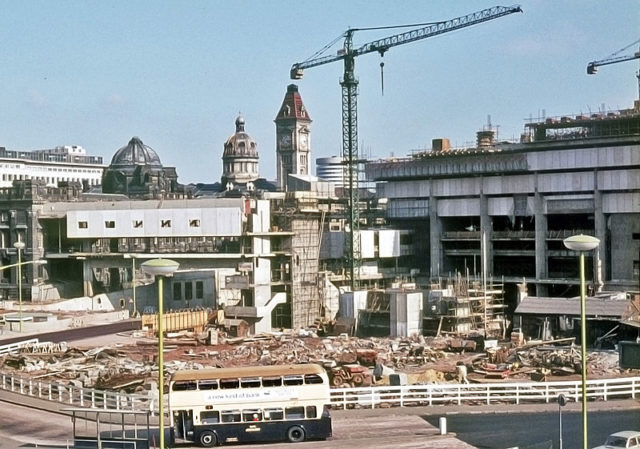
Initially, the plan included high walkways connecting all of the buildings through a maze of galleries. However, the walkways were never included, and only three buildings of the original plan were ever constructed: the school of music, pub, and Birmingham Central Library.
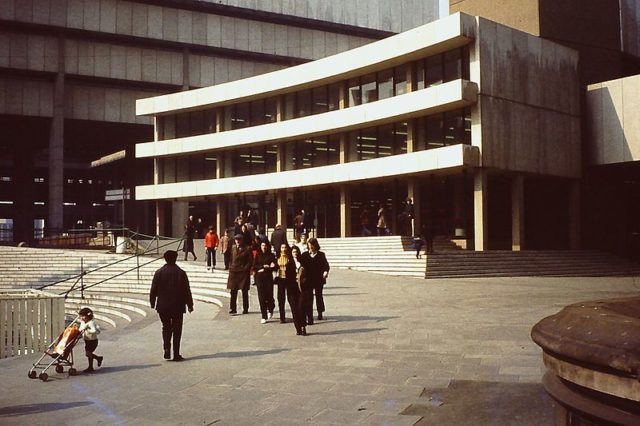
The library incorporated a reference library and a lending library. The lending library was intended for quick visits and could accommodate large numbers of people. It rose three stories above street level with a curved frontage.
The reference library was an eight-story building encompassing an open atrium. The library boasted 900,000 volumes, housed on a level with the reading areas. With its 250,000 square feet, this library was the largest non-national library in Europe.
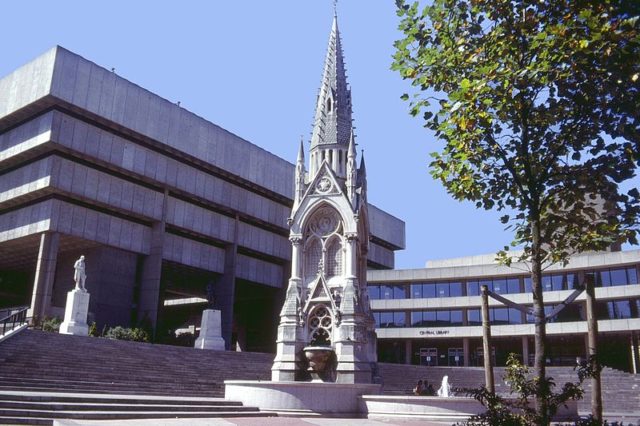
The beginning of the end for this library came in 1998. Argent Services LLP, a UK based developer, purchased the entire Paradise Circus site. The new Library of Birmingham was erected at a cost of £188.8 million ($292.6 million) in 2013. It was designed by Richard Rogers, the man behind the Millennium Dome in London. The same year, on June 29th, Birmingham Central Library closed its doors and its thousands of books were relocated.
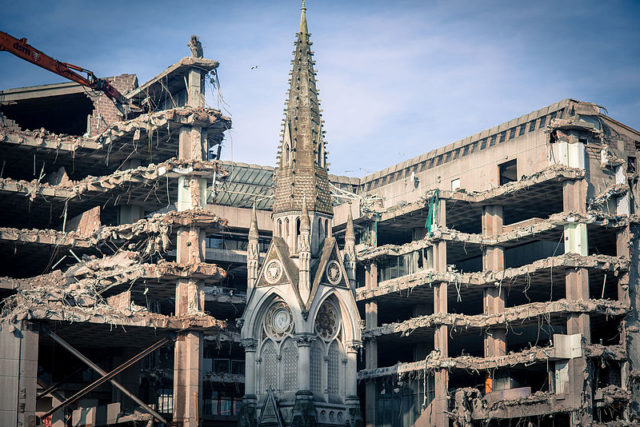
During summer 2015, the demolition crew began to demolish the site. By November, the crew was finished with the internal parts of the library and began to work on the exterior. The area was fenced off and no pedestrians were allowed to pass through.
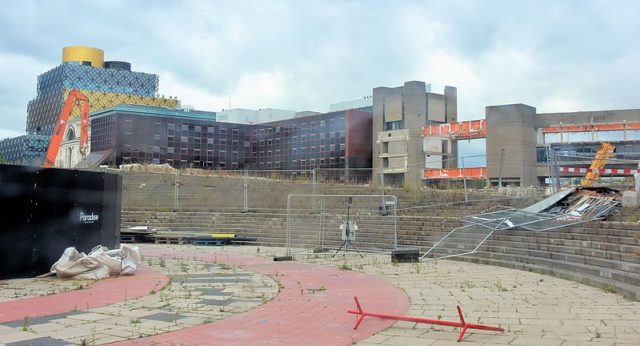
By December the removal of the concrete panels started. On January 28, 2016, the curved façade was demolished and by April that same year, it was completely removed. By summer 2016, the entire library was razed. There were many attempts to list this building under English Heritage, but they were unsuccessful, enabling its demolition.
